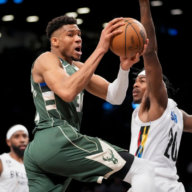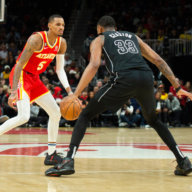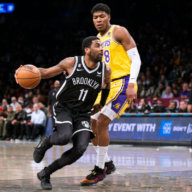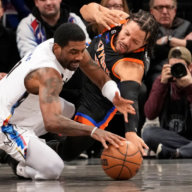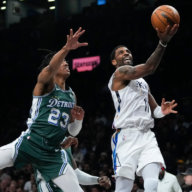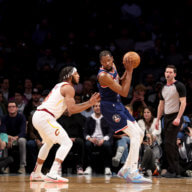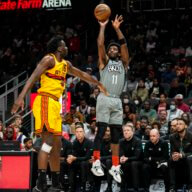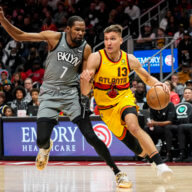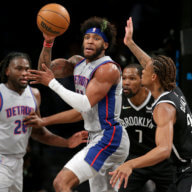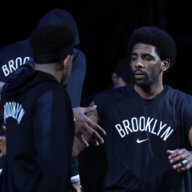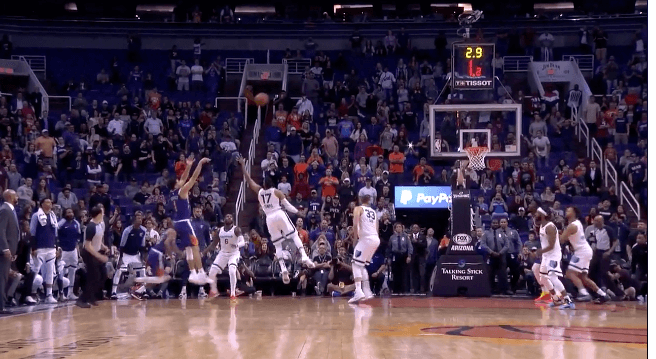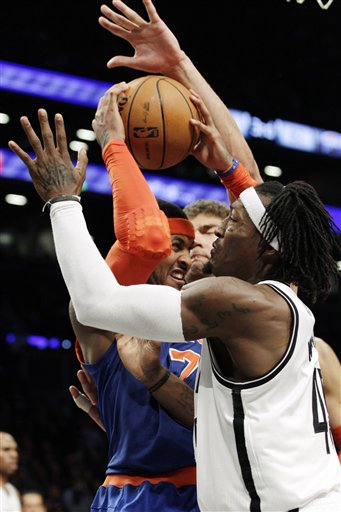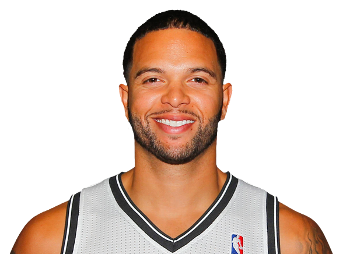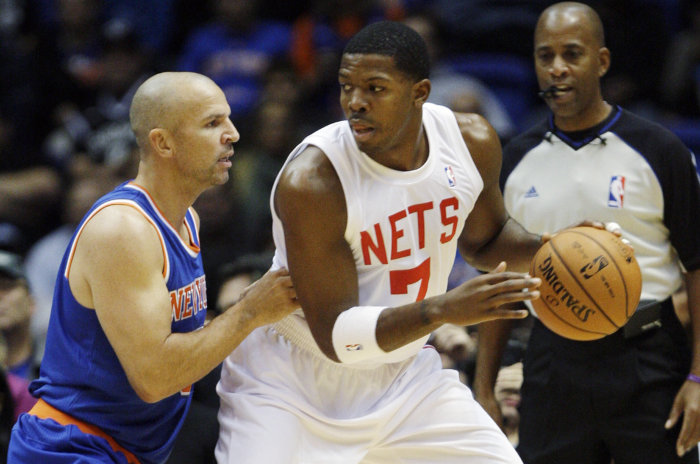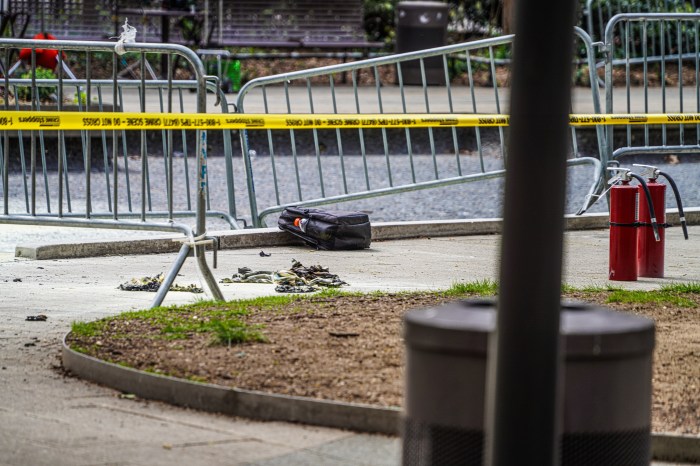
Team: Charlotte Bobcats
Last Year’s Record: 35-47 (4th, Southeast Division)
Head Coach: Larry Brown
Comings: Tyson Chandler, Gerald Henderson, Derrick Brown and Ronald Murray.
Goings: Emeka Okafor.
Blogger’s Talk: Brett Hainline of Queen City Hoops:
Bad offense, good defense means an average year for the Bobcats. And by average, I mean average for the Bobcats – mid to high 30’s in wins, no playoffs.
Hainline on the Nets:
Two building blocks in Devin Harris and Brook Lopez and another potential one in Terrence Williams. Beyond that, Courtney Lee is a solid rotation player, but let’s see a season of production first. After that – ugh, this will be a rough season in Jersey.
Comparing the Starters:
Starting PG – DJ Augustin (11.8 ppg, 3.5 apg, 14.95 PER) ) vs. Devin Harris (21.3 ppg, 6.9 apg, 21.65 PER): – Also known as the player the Bobcats took in the draft instead of Brook Lopez. Augustin still put together a decent rookie season, with a Player Efficiency Rating that came in microscopically under the 15.0 average. He’s a terrific shooter, sinking 43.9 percent of his threes and 89 percent of his free throws, good for a True Shooting percentage of 58.7. His assist numbers are pretty low for someone running the point. While he’s speedy and able to penetrate, he has a hard time finishing once he’s on the inside, with an effective field goal percentage of 47 percent on his inside shots. His assist per 40 minutes average was a paltry 5.2 and his assist ratio of 22.9 was among the bottom third for his position. He did a good job on the defensive end however. Opposing point guards had a PER of 14.3 and an effective field goal percentage of 48 percent when Augustin was on the floor last season.
Advantage: Nets. Augustin wasn’t the disaster of a draft pick some experts were saying at the time Charlotte selected him, but Devin Harris is a much more proficient scorer, and a better passer.
Starting SG – Raja Bell (11.9 ppg, 2.1 apg, 10.74 PER) vs. Courtney Lee (8.4 ppg, 1.2 apg, 10.78 PER): Once one of the key ingredients on the contending Phoenix Suns teams, Bell has evolved into a fairly one-dimensional player at this stage of his career. He’s still a very good three-point shooter, sinking 42 percent of his treys last season which was split between Charlotte and Phoenix. However, after enjoying a three-point percentage well over 40 percent during his time in Phoenix, Bell did see that percentage dip a bit once he joined Charlotte, shooting 39.5 from three in his games with the Bobcats. Bell has been considered one of the better defenders at his position, but ESPN’s John Hollinger did notice a slip in his game last season.
Advantage: Nets. Bell is clearly on the decline and Courtney Lee appears to be headed on the upswing. He’s a better defender than Bell now, and Lee is a more versatile scorer.
Starting SF – Gerald Wallace (16.6 ppg, 7.8 rpg, 18.64 PER) ) vs. Jarvis Hayes (8.7 ppg, 3.6 rpg, 10.85 PER): Gerald Wallace is an athletically gifted wing who’s biggest knock seems to be staying on the court. His nickname, “crash,” is apropos since he seems to fly around the court until he hits something, missing some games with an injury. He shot a decent 48 percent from the field and can rebound well for his position ranking second in rebound rate among small forwards. Wallace also gets his fair share of steals and blocks.
Advantage: Bobcats. Wallace does a lot of things well. He’ll never lead the league in scoring, but he helps his team in many ways. His health is always a concern, but when he’s on the court, he’s a more complete player than anyone the Nets could offer at the three spot.
Starting PF – Boris Diaw (13.2 ppg, 5.3 rpg, 14.5 PER) vs. Yi Jianlian (8.6 ppg, 5.3 rpg, 10.98 PER): An excellent passer for a big man, Diaw finished second among power forwards in assist ratio last year. He can score from a variety of places on the floor, with 51 percent of his field goals coming as jumpers and 49 percent on inside shots good for an overall effective field goal percentage of 54 percent. He also shot 42 percent from three during his time in Charlotte last season. Diaw is not the best rebounder or shot blocker, but he’s a very reliable on-ball defender.
Advantage: Bobcats. Another versatile, unique player in Charlotte’s frontcourt is a better bet for production than the hot and cold Yi who’s greatest asset so far is hitting open jump shots.
Starting C – Tyson Chandler (8.8 ppg, 8.7 rpg, 13.44 PER) ) vs. Brook Lopez (13.0 ppg, 8.1 rpg, 17.94 PER): Once one of the leagues promising big men, injuries and a decline in performance now raise some doubts about Chandler’s potential. Still considered one of the better rebounders in the game, his rebound rate and rebound per 40 minutes fell off from the year before. There is also concern that his offensive production will take a hit without the precision passing of Chris Paul to assist him in Charlotte this season.
Advantage: Nets. Chandler might be a better rebounder than Brook right now, but that’s about it. He’s going from one of the best passing point guards to one of the worst, so no more alley oops to inflate his points total.
Bench: Raymond Felton could battle Augustin for a spot in the starting rotation at the point, but he hasn’t done a lot to distinguish himself during his career. His points and assist averages are decent (around 15 and 7), but he’s not a good shooter for his position. Gerald Henderson is a good defender but a suspect shooter. The Bobcats have size with guys like DeSagna Diop and Nazr Mohammed backing up Chandler, but not much talent. Vladimir Radmanovic is an excellent three point shooter, but a lousy defender. Derrick Brown, a second round pick in the draft earlier this year, is a question mark at the four.
Advantage: Nets. I’m not the biggest fan of the Nets bench, but they have more offense at the wings, good shooters in Simmons and Hayes and intangible guys like Najera and Battie that I feel just compare better to what the Bobcats have to offer.

